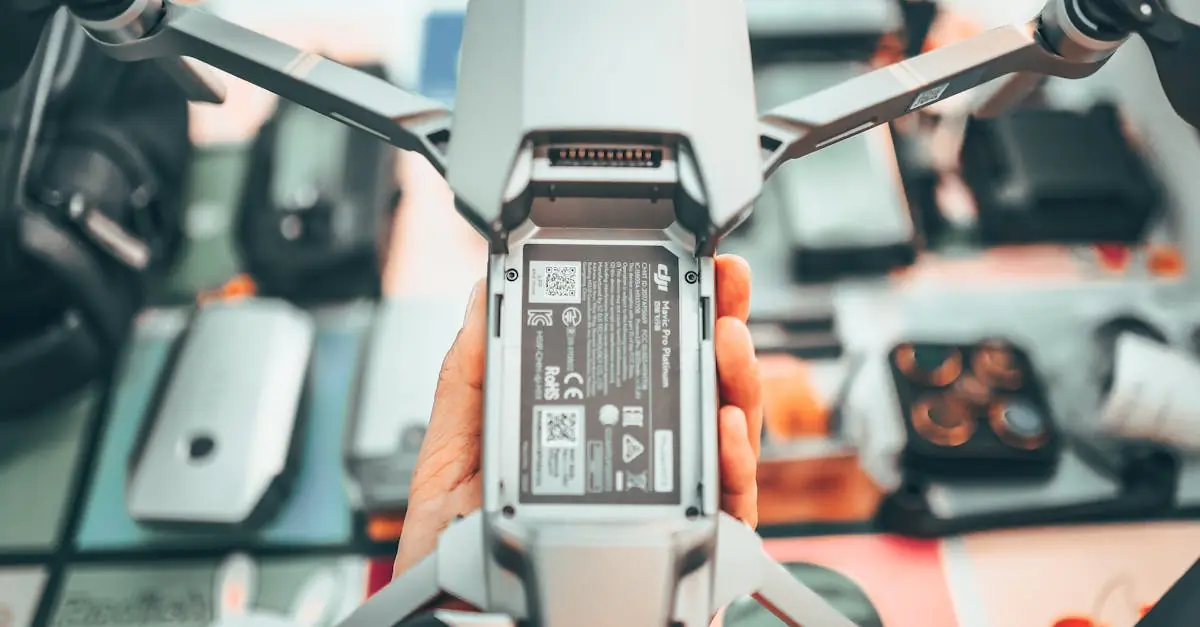Moving into a new place can feel like stepping into a thrilling adventure—complete with packing tape, cardboard boxes, and the occasional existential crisis about where to put the couch. But before diving into the chaos, there’s one crucial step that can save a lot of headaches: the move-in inspection. This isn’t just a formality; it’s your chance to ensure your new home is as fabulous as your Pinterest dreams.
Table of Contents
ToggleUnderstanding Move-In Inspections
A move-in inspection represents a crucial part of settling into a new home. This process ensures that a property meets renting or ownership standards and is ready for occupancy.
What Is a Move-In Inspection?
A move-in inspection is a comprehensive evaluation of a property prior to occupancy. Typically, landlords or property managers conduct this assessment. During the inspection, they identify existing damages or maintenance issues. Renters or buyers may walk through with the inspector to document the condition of walls, flooring, plumbing, and appliances. This documentation, often recorded on an inspection checklist, provides a reference point for both parties later.
Importance of Move-In Inspections
Move-in inspections play a vital role in protecting both renters and landlords. Conducting these inspections helps prevent disputes over security deposits. By identifying and addressing damages before moving in, parties can establish clear expectations. These inspections also enhance tenant satisfaction, ensuring issues are noted and resolved early. Furthermore, they promote accountability, as landlords must maintain properties in good condition.
Preparing for the Move-In Inspection
Preparation for a move-in inspection plays a crucial role in ensuring a smooth transition into a new home. Following a structured approach makes the process more efficient.
Creating a Move-In Checklist
Developing a move-in checklist streamlines the inspection process. List items like appliances, fixtures, walls, and floors to assess their condition. Include notes on any pre-existing damages, helping to document the state of each area. Addressing specific items can prevent future misunderstandings. Some essential checklist categories include kitchen, bathroom, living areas, and bedrooms. Checking off each item during the inspection maintains organization and focus.
Gathering Necessary Documentation
Collecting necessary documentation is vital before the inspection. Assemble the lease agreement, prior inspection reports, and any correspondence with landlords or property managers. Having these documents accessible aids in clarifying any terms or conditions. Include photographs illustrating existing damages or issues that might require attention. This supportive evidence strengthens any claims made during the inspection. Ensure all gathered items are readily available, making the process smoother and more efficient.
Conducting a Thorough Inspection
A thorough inspection ensures the property meets expectations. Attention to detail during this process prevents future issues.
Inspecting Each Room
Each room requires careful evaluation. Start in the living areas and check for signs of wear or damage. Examine walls for scuffs, marks, or holes. Floors should be free from stains or missing tiles. Windows must open easily and lock securely. Measure closet space to verify it meets needs. Lastly, don’t overlook bathrooms and kitchens, as plumbing and appliances are critical. Ensuring each space is functional promotes satisfaction with the new home.
Checking for Repairs and Maintenance
Repairs and maintenance can influence the move-in experience. Look for leaky faucets or running toilets, as these can lead to higher utility bills. Inspect heating and cooling systems, ensuring they operate efficiently. Check light fixtures and outlets to confirm they are in working condition. Inspect exterior features, such as the roof and gutters, for issues. Verify that smoke and carbon monoxide detectors are functional. Documenting necessary repairs aids in addressing concerns with the landlord or property manager, fostering a proactive approach to maintenance.
Final Steps Before the Inspection
Preparing for the move-in inspection involves some final touches to ensure everything is in order. These steps significantly enhance the efficiency of the inspection process.
Cleaning Your New Space
Cleaning the new space before the inspection creates a positive impression. Dust in corners, wipe down surfaces, and vacuum floors to ensure a tidy environment. Paying attention to bathrooms and kitchens is essential, as these areas often attract the inspector’s focus. Check for residual debris in appliances such as ovens and refrigerators. A clean home not only fosters a sense of readiness but also allows for clear visibility of any existing damages.
Ensuring Accessibility for the Inspector
Creating accessibility for the inspector helps facilitate a smooth inspection process. Clear pathways must be established in every room, enabling unrestricted movement. Ensure that all doors and cabinets open freely. Lockboxes or entry codes should be functional, allowing seamless access. If pets are present, consider securing them before the inspection begins. By making the space easily navigable, the inspection becomes more efficient, allowing the inspector to thoroughly assess conditions without hindrances.
Conclusion
Preparing for a move-in inspection is crucial for a smooth transition into a new home. By following the outlined steps and being thorough in the evaluation process, renters and buyers can ensure that their new space meets their expectations. Taking the time to document any existing issues and gathering necessary paperwork not only protects their interests but also fosters a positive relationship with landlords or property managers. A well-prepared inspection sets the stage for a satisfying living experience, minimizing potential disputes and enhancing overall tenant satisfaction. With careful attention to detail and proactive communication, the move-in process can be both exciting and rewarding.





